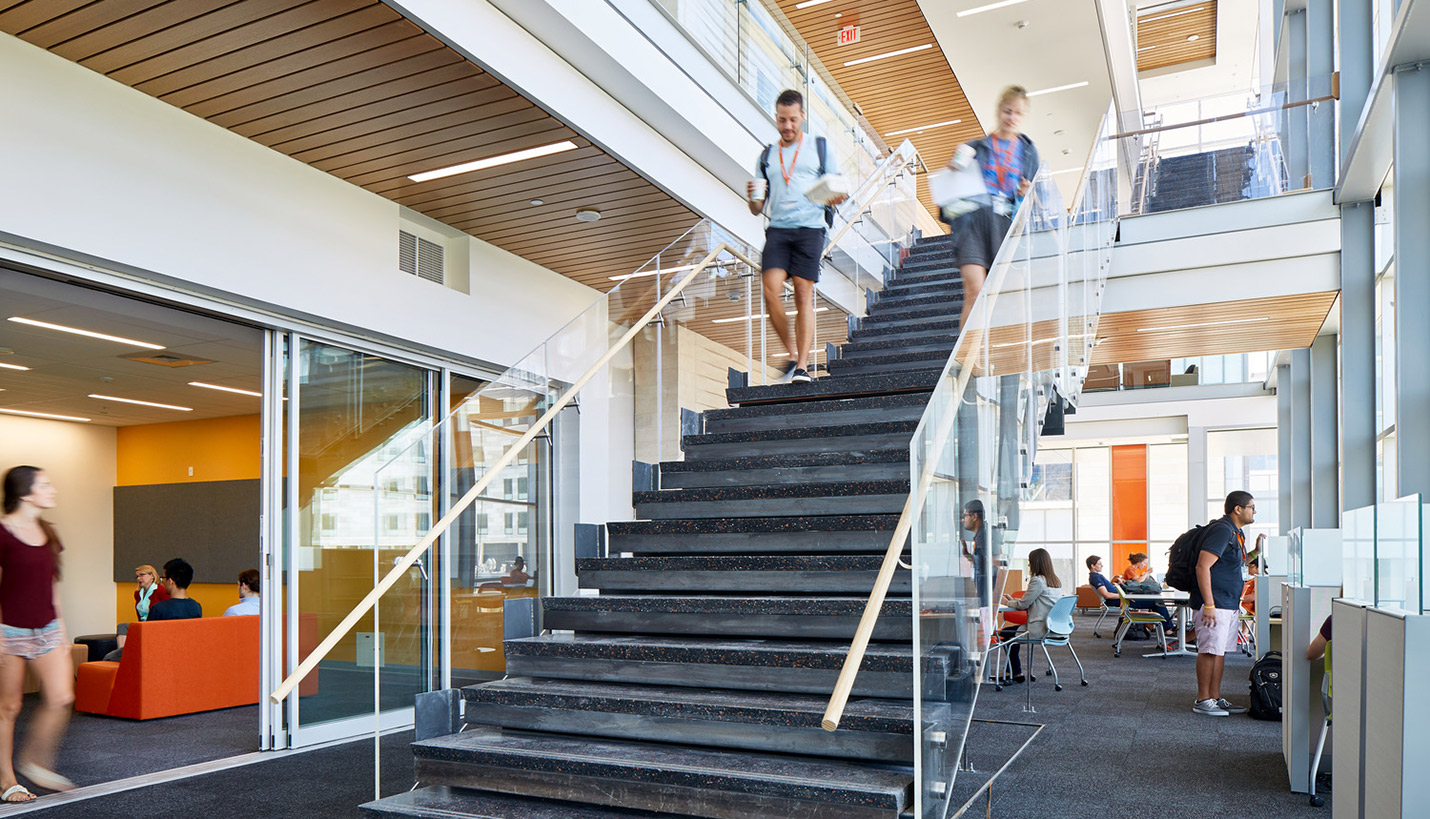

All Is Well: Health Transformation Building, Austin, Texas
Health Care Design Magazine has taken note of a milestone for a significant new facility that is intended to be an industry gamechanger. This summer, the new Dell Medical School at The University of Texas at Austin will welcome its first class to the Health Learning Building (HLB) on which Page served as design architect in association with The SLAM Collaborative. The HLB will serve as the educational and administrative center and as the first Dell Medical School building to be completed, it likely also will be a significant visual representative of the school.
In 2017, Dell Medical School will open a new outpatient facility within Austin’s burgeoning medical district: the Health Transformation Building (HTB), a key part of Dell Medical School’s mission to rethink how people get and stay healthy. Page is the architect of record in association with ZGF Architects on HTB as well as the Health Discovery Building and its associated parking garage.
HTB is a collaborative partnership with the UT Austin Design Institute for Health and new Dell Seton Medical Center at The University of Texas. The building’s new ambulatory care programs will demonstrate efforts to transform the healthcare system and support interprofessional, multidisciplinary, team-based approaches to care. Services will center on a “patient as partner” concept, promoting health and wellness while helping people manage diseases.
The use of technology in design seeks to give the patient some control, such as planned touch screens in the exam rooms that will allow the patient to interact with his or her healthcare information. Twelve-by-12-foot exam rooms accommodate simultaneous visits with clinical team members and family. Space will be dedicated to provide clinical teams areas to work together and coordinate health and wellness needs; there are no private physician offices.
The specially designed site will integrate:
- New models of care: What does an ambulatory surgical center look like when the goal is to reduce surgeries?
- New business models: How can a facility open doors to all patients and payers while building a sustainable entity?
- Creative design principles: What if your doctor's office had no waiting room, and thus, no waiting?
With a primary focus on patient and family/caregiver experience, these programs will include medical, surgical, diagnostic, and treatment specialties, along with health management through coordinated clinical interventions, navigators, case managers, education, and home care—all aligned around integrated practice units associated with specialty institutes that will be phased in over time.
The facility is being designed by Page to cluster seamlessly integrated services surrounding specific diagnoses/conditions, including ancillary and support services for patients and families. The services will emphasize outcomes, satisfaction, and convenience, with robust technology helping providers meet the school’s mission.
To view the Healthcare Design Magazine article by Kristin D. Zeit in full, click here.
05/05/2016
People
- Daniel Brooks
- Robert E. Burke
- Ginny Chilton
- Joshua D. Coleman
- Kregg Elsass
- Mattia J. Flabiano III
- Patrick Gurley
- Breanne Hanson
- Shawn-Marie Henson
- Jeffrey G. Jewesson
- Matthew Z. Leach
- Ryan Losch
- Joseph P. Moore
- Erin D. Nash
- Bryan O'Sullivan
- Freddy Padilla
- Dale Robinson
- Brian D. Roeder
- Sana Sabharwal
- Kimberly Schuessler
- Jerald L. Segner
- Jonah T. Sendelbach
- Talmadge Smith
- Lawrence W. Speck
- Wendy Dunnam Tita
- Randy C. Twedt
Related Posts
- A District Built For Health
- Tempering the Temporary: Improving thermal comfort and safety in relief shelters
- Ushering in New Era of Science Research
- Nurturing Resiliency through Relationships
- Overview: Dell Medical School at The University of Texas at Austin Updates
- Winner: Community Impact Award
- New School of Thought at New School of Medicine








